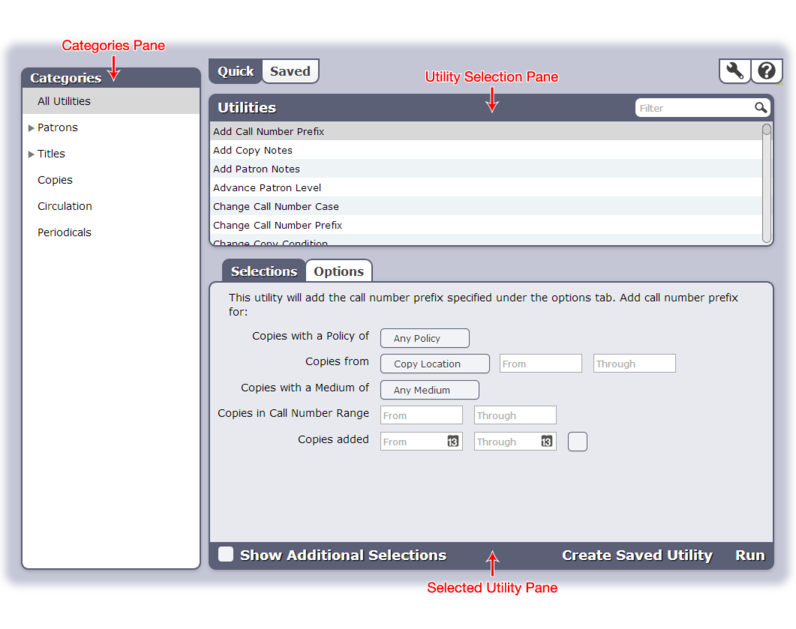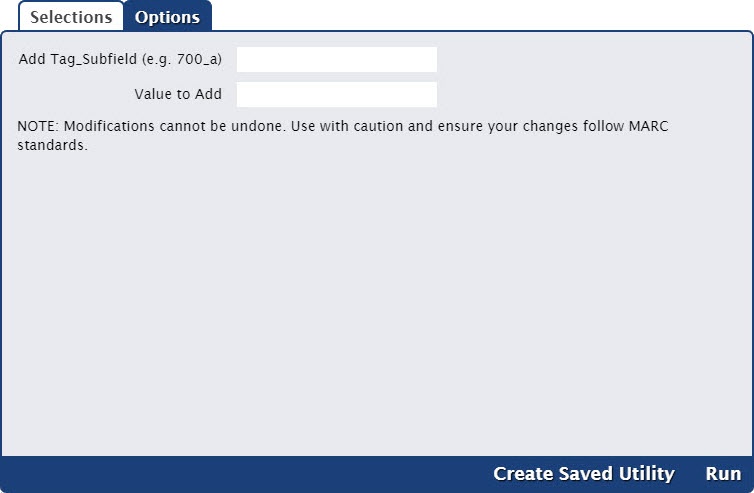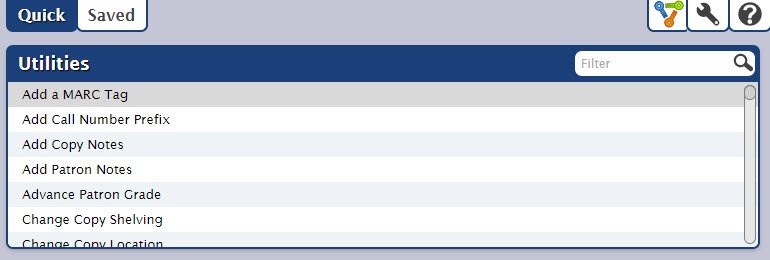How helpful was this page?
Related Blog Posts
Blog Posts
-
Winter storms–recompute due dates
created by
Jan 23, 2024
-
Keep track of items on display
created by
Nov 02, 2022
-
Keeping track of patrons: Account expiration dates
created by
Jul 06, 2022
-
End-of-year tips: Managing patrons
created by
May 03, 2022
-
Are your Utilities running?—Take the right steps
created by
Feb 16, 2022
-
Analyze your collection—Mitinet and Titlewave
created by
Aug 06, 2021
-
Removing holds—Easy as 1, 2, 3
created by
Mar 10, 2021
-
Changing call numbers—helpful utilities
created by
Mar 03, 2021
-
Mystery, fantasy, classics—Adding genres
created by
Feb 24, 2021
-
My data!—All about archives
created by
Feb 17, 2021
Most Circulation commands and operations are designed to modify individual pieces of data one entry at a time; utilities, however, can change large amounts of information in your database at once. The Utilities window allows you to create your own set of essential utilities; we provide the general templates that help you build utilities that modify, transfer, remove, update, or verify the information you require. Once you've created custom utilities, there won't be a need to adjust the particulars very often.
Take some time to explore the categories and subcategories and set up some Saved utilities for which you'll be able to easily access and run in the future.
Utilities change large amounts of information in your database at once. Be absolutely positive that you want to perform the selected utility before clicking Run; once these operations have been performed, they can not be undone. If a utility was incorrectly run, your only recourse will be to restore from a daily Archive.
The Utilities window
The Utilities interface may look complicated at first glance, but it was designed with simplicity in mind—placing everything in an easily navigable window that allows you to quickly find, modify, and run utilities. Additionally, the Utilities interface allows you to create utilities that only modify, clear, or clean required information: records of interest, title/copy policies, patron histories, and all types of circulation transactions. In order to become a utility wizard, there are only three essential things you need to understand: utility categories, utility templates, and creating custom utilities.
The Utilities interface uses the familiar three-panel layout found in most Alexandria management interfaces.
- The left-hand side of the window is home to the Categories pane, containing a list of all existing utility categories (e.g. Titles) and subcategories (e.g. General). Selections from this pane act as filters, allowing you to narrow your focus and display only relevant utilities.
- The upper-right section of the window contains the Quick and Saved tabs and the Utility Selection pane, which allow you to select the specific utility you would like to view, modify, or run. If you haven't yet selected a utility from this pane, you will be presented with a larger list; the Selected Utility pane for Quick/Saved utilities only appears after a utility is selected from this list.
- The Selected Utility pane—the bottom-right area of the window—contains settings and options for the selected utility, housed in the following tabs: Overview, Selections, Options, Notification, and Schedule.
Control strip
The control strip at the top of the Utilities interface contains the Save and Revert buttons[1], the Operation Management and the Support Center help icons, the Lock/Unlock icon and the Actions (“”) menu which performs functions related to the selected utility.
Quick / Saved
The Quick tab contains a complete list of available utility types; essentially, an exhaustive repository of existing utilities. These templates do not store custom selection settings and should not be confused with operator-created Saved utilities; they are mainly used for running “ad-hoc” utilities or as a foundation for your own Saved utilities. If you haven't been able to locate the exact templates you are looking for, chances are you will find them here.
The Saved tab contains all operator-created utilities; custom templates that store the selection criteria used to run the utility.
Unlock / Lock
The Unlock / Lock icon only appears when the Saved tab is selected; the default state of the Saved tab is always “locked”. This prevents an operator from making unintentional changes to the currently selected utility. When the Saved tab is locked, utilities may still be viewed and run, but modification of any of the utility settings are disabled until the utility is unlocked. The Saved tab will remain unlocked until you click the lock icon again or the window is closed.
Actions Menu
The Actions drop-down menu (represented by a gear/cog icon) contains specialized utility-specific functions and other tools; the Actions menu only appears when the Saved tab is selected.
Duplicate Utility—Should you want nearly identical settings for a custom-created utility, this allows you to make a copy of the selected Saved utility, give it a new name, and make whatever changes you require.
Delete Utility—This selection completely removes the selected Saved utility from the Utility Selection tab. This can not be undone (i.e. Saved utilities can not be restored), so think twice before making this selection.
Save / Revert
Once changes have been made to the currently selected Saved utility, the Revert and Save options appear. Clicking Revert will discard changes to the Saved utility; clicking Save will keep your changes.
Operation Management
Alexandria's Operations Management is a specialized repository where past and future operations (i.e. reports, utilities, exports, or imports) are sorted and stored. You can view operation summaries and open, email, or download saved operations that have previously completed.
Clicking Run at the bottom of the Utilities interface will queue the selected utility in the Operation Management interface.
Support Center
Click the Help button to access the utilities section of our online Support Center.
Categories
The first step in running a utility is picking the proper category. The Categories pane on the left-hand side of the window is a collection of categories that can reduce the number of results that appear in the Utility Selection pane (i.e. the Quick and Saved tabs) on the right.
You are able to expand or contract associated subcategory sections by clicking the icon located to the left of the main category name. Selecting (highlighting) one of the main category—or subcategory—names (e.g. Titles) will reveal all of the utilities available for that category (or subcategory). For example, if you want to run an Advance Patron Level utility, you can’t do it with the Circulation category selected—they're Patrons (category) utilities. Selecting All Utilities at the top of the categories filter will populate the Quick and Saved tabs with all available utility options.
- All Utilities. This category contains all the available utility types.
- Patrons. Patron utilities allow you to modify or remove packs of patrons. For example, you can change patron policies, renew expired cards, or advance patron grades.
- Titles. Title utilities allow you add, modify, and remove information for any number of titles in your collection. For example, you can change a group of title policies.
- Copies. Copies utilities allow you to add, modify, and remove information for any number of copies in your collection. For example, you can remove lost copies, replace copy locations, or change call number prefixes on copious copies.
- Circulation. Circulation utilities are used to clear patron histories, correct batches of incorrect due dates, or verify and update your circulation records.
- Periodicals. Acquisition utilities are used to remove select route and subscription information.
Utility selection pane
The larger, right-side of the Utilities interface is dedicated to the currently selected utility and contains all of the utility's configurable settings and options.
Directly below the control strip is the Utility Selection pane; this pane changes dynamically depending on whether you have the Quick or Saved selected. Remember, the utilities that appear in the Utility Selection pane directly relate to the category (or subcategory) selected from the Categories pane and/or the information that is entered into the Filter bar.
Filter Bar
The Filter bar, in conjunction with the Categories pane, can be used to further filter the results of the Utility Selection pane. In some ways, this is the consummate utility filter—far surpassing the Categories pane. In fact, you may find yourself never using the Categories filters again, preferring instead to check against All Utilities using the Filter bar.
For example, if you select Periodicals from the Categories pane and then type “remove” in the Filter bar, you would only see periodical-related utilities in the Utility Selection pane. If you have All Utilities selected from the Categories pane and type “remove” into the Filter bar, you would see results matching all periodical utilities.
The results of the Filter bar depend on whether you have the Quick or Saved tab selected and what category filter is being applied.
If you would like to search the entire collection of utilities you will first need to select All Utilities from the Categories pane and then provide a term in the Filter bar. For instance, if you’re looking for a simple copy-based utility and don’t want to bother with the category filters, simply select All Utilities and start typing “copy” in the Filter bar.
Utility Selection: Quick
When the Quick tab is selected, the Utility Selection pane allows you to see the complete list of available utility types; essentially, an exhaustive repository of existing utilities. These templates do not store custom selection settings; they are mainly used for running “ad-hoc” utilities or as a foundation for custom Saved utilities.
Using the Categories pane and Filter bar, the results in the Quick Utilities list will only reflect utilities pertaining to selected categories. For example, if you select Circulation from the Categories pane, the Utility Selection pane will only display Circulation utilities; if you select a Circulation subcategory, your results will be further refined.
Selecting a utility type from the Utility Selection pane automatically populates the bottom portion of the window (i.e. the Selected Utility pane) which contains utility information in the Selection and Options tabs. These tabs contain selection settings that are essential to how your utility is performed. By default, the Selections tab has focus when new utilities are selected.
Utilities from the Quick tab are considered “impromptu”; any modifications made to the Selections and Options tabs are discarded immediately after switching to another utility category.
For example, if you have the Titles (category) > Copies (subcategory) > Change Copy Policy (utility type) selected and then click on the Patrons category, all information that you may have modified or provided to the Change Copy Policy utility will be lost; even if you were to immediately return, you would find all your settings wiped.
However, if you would like to save the Quick utility you’ve just modified, click Create Saved Utility at the bottom of the Selected Utility pane. After adjusting the default utility name (optional), your new utility—including custom settings—will be added to the Saved tab.
Utility Selection: Saved
The Saved tab only stores the selection criteria used to create the custom utility. It contains custom utilities that you (or others) have created, saved, and shared. When the Saved tab is selected, Favorite, Shared, and Operator filters (described below) become available Utility Selection pane.
Using the Categories pane, Filter buttons, and Filter bar, the results in the Saved Utilities list will only reflect utilities pertaining to selected categories. For example, if you select Patrons from the utility Categories pane, the Utility Selection pane will only display custom-created patron utilities.
Selecting a Saved utility type from the Utility Selection pane automatically populates the bottom portion of the window (i.e. the Selected Utility pane), which contains utility information in the following tabs: Overview, Selections, Options, Notification, and Schedule. These tabs contain selection settings that are essential to how your utility is performed. By default, the Selections tab has focus when a Saved utility is selected.
Once a Saved utility has been selected, it can then be run, modified, duplicated, or removed.
Saved Utility Filters
When the Saved tab is selected, Favorite, Shared, and Operator filters become available in the Utility Selection pane. After applying a filter, it remains until manually disabled—even when using the Filter bar. Individual Saved utilities can be “favorited” or “shared” by checking the Favorite and/or Shared box(es) in the Overview tab; if the check is removed, they will no longer be marked as “favorite” or “shared”.
- Filter by Favorite. This button only appears when the Saved tab is selected. Once enabled, you will only see utilities marked as Favorite in the Utility Selection pane. This filter is applied until it is manually disabled.
- Filter by Shared. This button only appears when the Saved tab is selected. Once enabled, you will only see utilities marked as Shared in the Utility Selection pane. This filter is applied until it is manually disabled.
- Filter by Current Operator. This button only appears when the Saved tab is selected. Once enabled, you will only see utilities that you have created in the Utility Selection pane. This filter is applied until it is manually disabled.
Selected Utility Pane
The Selected Utility pane, located at the lower-right of the Utilities interface, is dynamic; the available tabs, fields, and options change depending on the utility you currently have selected in the Utility Selection pane and whether Quick or Saved is selected from the control strip.
These tabs contain settings that allow you to configure selection options essential to how your utility is performed.
By default, the Selections tab has focus when Quick or Saved utilities are selected.
Selected Utility: Tabs
The available Selected Utility tabs change depending on the utility you currently have selected in the Utility Selection pane and whether Quick or Saved is selected from the control strip. Use the following links to learn more about the individual settings and options of each tab: Overview, Selections, Options, Notifications, and Schedule.
Selected Utility: Controls
The bottom of the Selected Utility pane has some controls that change dynamically depending on whether you have the Quick or Saved selected.
- Show Additional Selections. Some utilities have uncommon or infrequently used selections initially hidden from view. When they are, a Show Additional Selections box is available. Once checked, the hidden selection options become available.
- Create Saved Utility. If you would like to save the Quick utility you’ve been modifying, click Create Saved Utility. After adjusting the default utility name (optional), your new utility, with custom settings, will be added to the Saved tab. This option only appears for Quick utilities.
- Run. Performs the utility and send a report to the Operations Management queue; every utility you run will be documented in the Show My Operations log in Operation Management.







